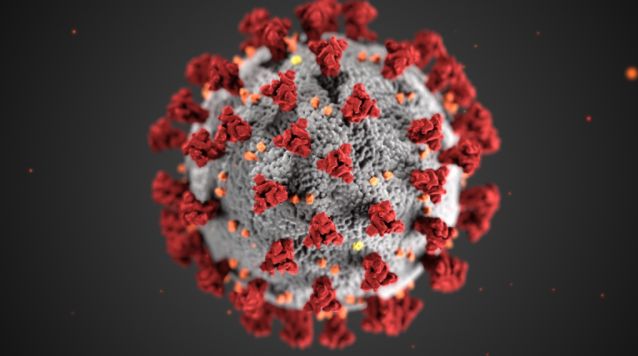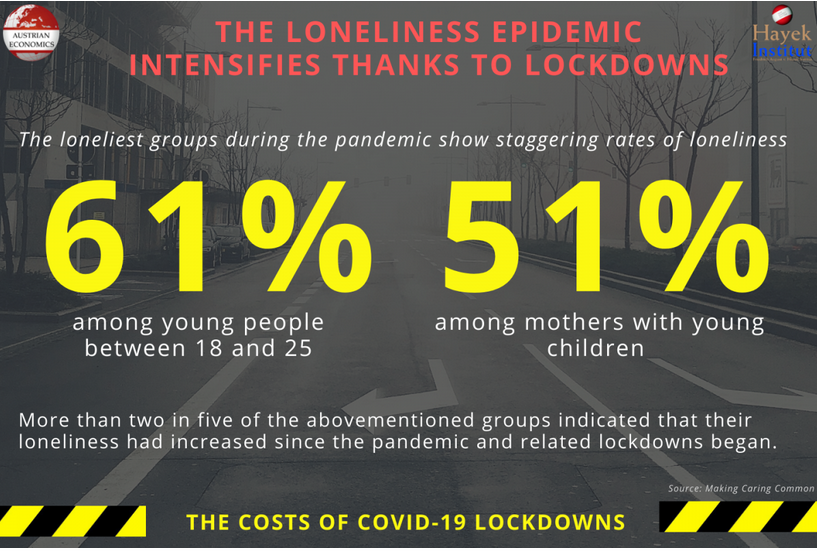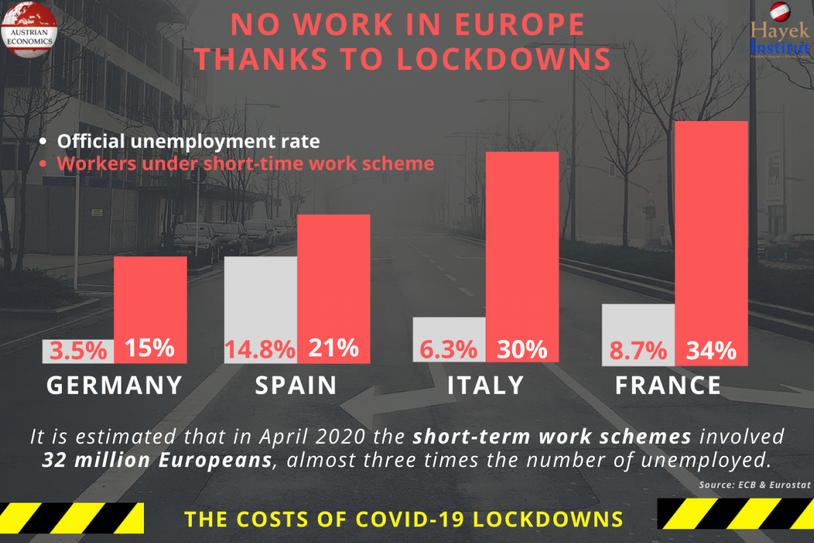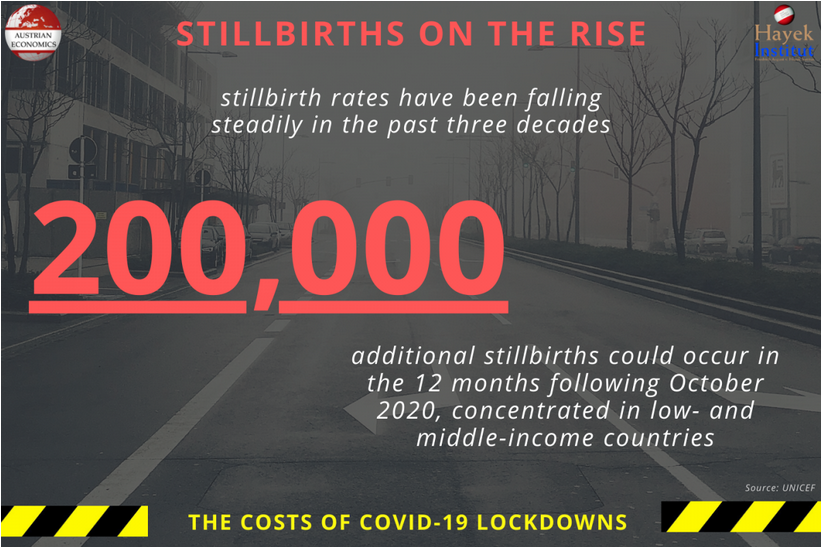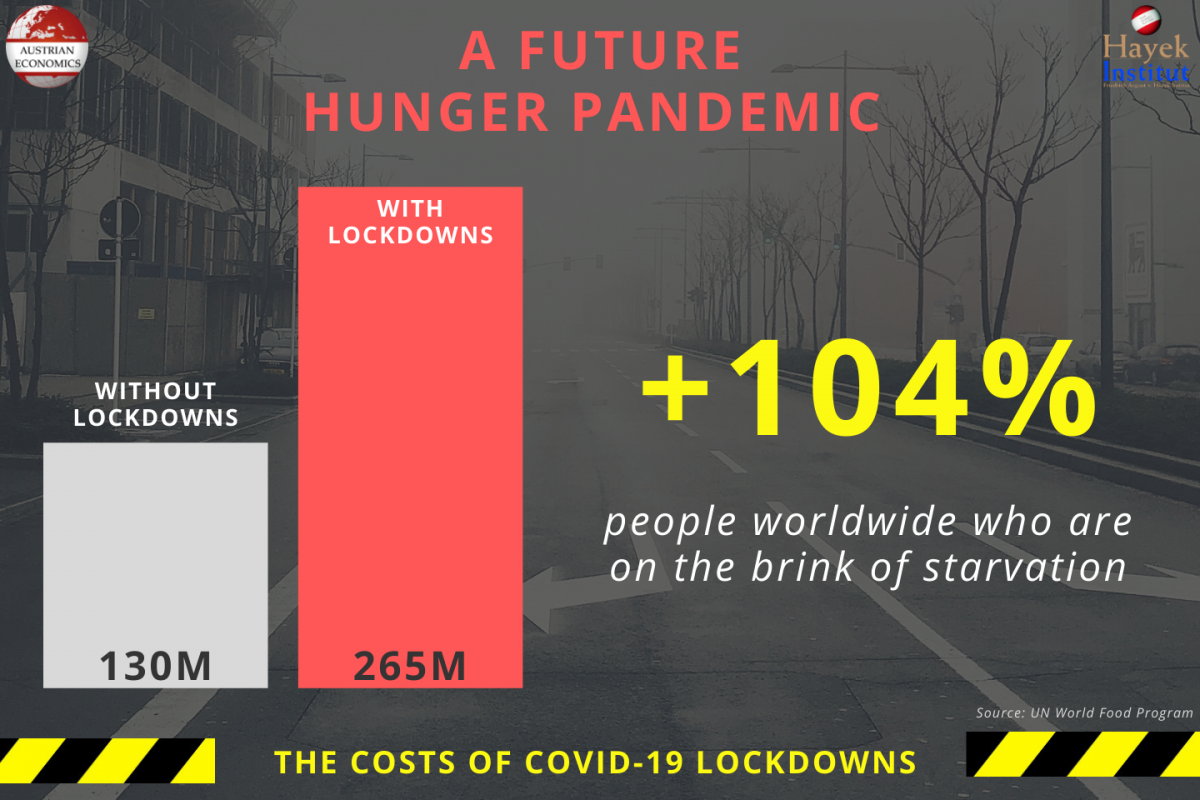India’s experience with the COVID pandemic was particularly unpleasant… [PT] - Click to enlarge Scavengers Out in Full Force I have just returned from a visit to my family in India. It was hard to escape. To get to the US from India, I needed a COVID test. The Indian government has seriously restricted who can provide COVID testing, treatment, and vaccination. Private doctors and hospitals that are not approved face brutal legal consequences if they provide COVID treatment. Emergency powers were centralized early last year in the hands of the Indian Prime Minister, Narendra Modi. He gave himself direct control over the bureaucrats of the states, making local governments largely impotent and dependent on him. Getting vaccinated, the Indian way.
Topics:
Jayant Bhandari considers the following as important: 6b) Austrian Economics, 6b.) Acting Man, Featured, newsletter, On Politics
This could be interesting, too:
Vibhu Vikramaditya writes Navigating the Slippery Slope: How Hoover’s Interventions Paved the Way for the Great Depression
Ryan McMaken writes Frédéric Bastiat Was a Radical Opponent of War and Militarism
Douglas French writes Millennials: In Costco We Trust
Joseph T. Salerno writes What Fed “Independence” Really Means
Scavengers Out in Full Force
I have just returned from a visit to my family in India. It was hard to escape. To get to the US from India, I needed a COVID test. The Indian government has seriously restricted who can provide COVID testing, treatment, and vaccination. Private doctors and hospitals that are not approved face brutal legal consequences if they provide COVID treatment.
Emergency powers were centralized early last year in the hands of the Indian Prime Minister, Narendra Modi. He gave himself direct control over the bureaucrats of the states, making local governments largely impotent and dependent on him.
Getting vaccinated, the Indian way. pic.twitter.com/GztV3nhnbs
— Jayant Bhandari (@JayantBhandari5) May 12, 2021
In their supreme wisdom, government bureaucrats concluded that because the prefix “COVID-” exists in treatment, vaccination, and testing, they must all be performed at the same place. For my test, I sat in a petri dish of COVID, with those coming out positive sitting right next to me. Desperate, vulnerable old people, who merely wanted to get their jabs, sat among us. Those who were sick for reasons other than COVID were among us too, for the government has required everyone who is sick to be tested for COVID first .
A microcosm of how everything is done in India, the tests were given haphazardly, with samples getting mixed up, nurses spending most of their time fighting among themselves, and — lacking a lineup system — people crowded together, pushing and breathing into the mouths of one another.
A few days earlier, the government had given notice of the rate of tests and further restricted where they could be performed. A bribe-taking system would have been my preference to bypass government restrictions, but no such system has evolved yet. Nevertheless, corruption has exploded, and self-centeredness, apathy, a dog-eat-dog environment has come to the surface. You see this everywhere; the scavengers are out in full force.
I went to a private COVID hospital. The situation in government hospitals is far worse, beyond my capacity to cope with it.
The World’s Worst Lockdown
Yet the story of COVID in India is hardly about COVID as such, which is nothing more than a trigger. More than twice as many people died of fairly easily treatable tuberculosis in 2020 than of COVID. Instead, this is a story of foolish rulers, completely hollowed out institutions, and a pathetically irrational and tribal society.
India’s Hunger Games: There is no history of Indians fighting back, for they lack moral consciousness. They also know that if they do fight back, their nails will get pulled out and they will be beaten with the stick on the sole of the feet, the usual practice. Courts do nothing. pic.twitter.com/228lSn3ejw
— Jayant Bhandari (@JayantBhandari5) May 13, 2021
The lockdown that India declared in March 2020 was the world’s most atrocious. It was a nationwide curfew, with no-one allowed to leave home, not even to shop for groceries. The police destroyed grocery shops that dared to open. It took the government a couple of days to realize that people needed to buy food — the original decision had been a shot from the hip, completely bereft of any effort to think things through. During the four-month curfew, the police ruthlessly beat up people, particularly those who looked poor. Trains, flights, and all transportation had come to a complete, grinding halt.
India’s Hunger Games: Given an India a stick, and you can be assured he will use it. Give him a position of power, and he will abuse it, exploit people and humiliate them. Indians have no moral consciousness. They feel no righteous anger. They are either exploiters or exploited. pic.twitter.com/TZ7qD97dvX
— Jayant Bhandari (@JayantBhandari5) April 27, 2021
India’s Hunger Games: The old way to control covid has come back with a vengeance. Destroy food and livelihood so that people instead die of hunger. There is no plan, only shooting from the hip. pic.twitter.com/xXB1nWrufI
— Jayant Bhandari (@JayantBhandari5) April 16, 2021
Many people relished to no end that they were allowed to restrict and abuse others, doing so by masquerading as do-gooders with the support of the law, inflicting pain on those who did not resist and taking the appalling results in stride. They then experienced elevated, sadistic, perhaps even sexual pleasure. As always, the exploiters and the exploited were two sides of the same coin, though forever interchangeable — the reason why India never finds an escape from its drudgery.
India’s Hunger Games: Police humiliating people to make them self-responsible. Only the stupid Indian regime knows how this adds up. pic.twitter.com/BVuqDUEbhR
— Jayant Bhandari (@JayantBhandari5) May 3, 2021
When people were allowed to go out grocery shopping, the government required shops to open for limited hours each day, as if the virus were more dangerous at other hours. This led to overcrowding — so the opening hours were restricted further! Soon shops were instructed to open only for a limited number of days each week. After a year of this policy, the government is still unsure why crowding has continued to worsen.
India’s Hunger Games: Restricting opening hours of shops, according to the rulers, results in more social distancing. If that does not work, they do more of the same. This has been going on for a year. Now, grocery shops, in places, are open for only 4 hours, thrice a week. pic.twitter.com/m7AlFQa0el
— Jayant Bhandari (@JayantBhandari5) April 22, 2021
The country has actually been barricaded, making it look like a war zone, with many roads and highways entirely closed off. The remaining streets have only one side open for two-way traffic, leading to numerous head-on collisions. The barricades are not fluorescent, a technology that Indian safety experts have yet to appreciate.
Train services are minimal, and only a very limited number of security lineups is open at airports. The government believes this promotes social distancing. Wherever one is permitted to go, one is facing neck-to-neck over-crowding.
After a year of lockdown, the government hasn’t a clue how to control covid. They make utopian policies that do not work in India. Every new lockdown measure creates massive chaos, which spreads covid more than it contains. Here is Delhi, just before lockdown is to take effect. pic.twitter.com/5JC6h3RMZM
— Jayant Bhandari (@JayantBhandari5) April 20, 2021
With the city barricaded, it took me forever to get to the airport. To protect politicians (from COVID and increasingly from irate citizens), large areas where they live have been completely closed off. Sick people cannot find a way to get to the hospital, although only those keen on dying should actually go there.
Shortages Everywhere
No hospital that is allowed to dispense COVID treatment has the beds, oxygen, or medicine available. Not one. A single dose of critical medicine, otherwise sold for $10, is selling for as much as $1,000. I even heard a price of $7,000. Oxygen cylinders, usually priced at around $10, today go for as much as $1,000, if you can find them. It is worth remembering that more than 80% of Indians live on less than $2 a day.
While people are desperately looking for oxygen cylinders, those savvy enough have stockpiled them and medicines at home. What would have been a slight shortage has snowballed into a complete disappearance from the market. So bad is the situation that people in top political positions are pleading for them on social media. One person I know had to get the governor of his state to let his relative be given priority in cremation.
The girl killed herself. The Indian police, instead of moving her body in a car or an ambulance, forced it on her father to walk with her body for 35 km for autopsy. This is the kind of apathy Indian institutions have. pic.twitter.com/DfL7wIEeSI
— Jayant Bhandari (@JayantBhandari5) May 12, 2021
Getting an ambulance (which is no more than a broken taxi with a metallic stretcher) for a short ride, can cost many hundreds of dollars, in some cases running into thousands. Those who haven’t lived in India may find it hard to imagine, but this is not unique to these COVID days. India has never had a functioning ambulance system. That is why hundreds of thousands lacking help to get to the hospital die in the streets every year.
India’s Hunger Games: Indian way to send bodies to crematorium. pic.twitter.com/TWgalZj6mz
— Jayant Bhandari (@JayantBhandari5) May 2, 2021
But this is not a compassionate country. I was brought up in India, but I learned the meaning of “compassion” only when I left the country. During the past year, the police have brutalized many people in India, but not one Indian court has taken a suo motu interest in charging the police. Justice is merely some words scribbled on parchment.
Early this year, when Indian COVID cases were falling rapidly, there were talks about how the use of turmeric in Indian food, cow urine and dung in “treatment,” the “goodness of Indian genes,” and India’s “ancient, spiritual civilization” were behind the success. India was advertising itself as the savior of the world.
Treatment for covid: Cow dung. pic.twitter.com/TWycysEKQj
— Jayant Bhandari (@JayantBhandari5) May 12, 2021
In fact – if facts mean anything – the Indian diet is among the worst in the world, full of carbohydrates, sugar and oil, and poor in nutrients and proteins. It is the kind of diet that makes one susceptible to chronic diseases such as diabetes and hypertension. And a year of lockdown has seriously reduced the health of everyone. Those who could afford to sit at home gained weight, lost general immunity, and did not exercise. Poor people became much poorer, victims of massive unemployment and relatively high inflation. The beggars on the street remind one of the impoverished 1980s.
Hospitals Are For Dying
India has 0.5 hospital beds per 1,000 people, a fraction of what is required — only 5% of hospital beds are in ICUs. Even before COVID hit, Indian hospitals were overflowing with patients. They occupied every single bed, often with more than one person in every bed, and the space in corridors and between the gate and the buildings. I have never seen this any other way.
Japan had no lockdown. Its 2020 death rate fell. Covid has been chiefly a test of how well the institutions work, people manage their health, and the health system is structured. After a year, India hasn’t organized even the basics. pic.twitter.com/6IrjDulL15
— Jayant Bhandari (@JayantBhandari5) April 21, 2021
Doctors and nurses are very ill-trained, lack competence, and are arrogant and heavy-handed. It is natural selection; the better ones tend to leave for the West. I have never been to a hospital — not even a private one — where work flowed correctly. My earliest memory of visiting a hospital is of two nurses giggling when one had given a wrong injection to a patient.
India’s Hunger Games: Dealing with the dead, the Indian way. pic.twitter.com/W7eyxulxPx
— Jayant Bhandari (@JayantBhandari5) May 2, 2021
Many years ago, someone I was helping out ended up in a government hospital. The doctor wanted to amputate his hand, for it was the easiest thing to do. We had to smuggle him out by bribing the policeman to a private hospital where his bones, with some work, could be set in place. Also, many years back, my granddad died, struggling for oxygen. He had gone to a private hospital, in his scooter, for a minor checkup. They ended up doing a few operations on him. While he struggled, the two doctors argued about how the pressure difference provided oxygen and drained urine.
India’s Hunger Games: The problem is not covid but an extraordinarily corrupt and apathetic medical system with no accountability. And these scenes are nothing new—I have never seen it any other way in India. One should avoid hospitals as much as one can pic.twitter.com/WqfoH9kD7Q
— Jayant Bhandari (@JayantBhandari5) May 4, 2021
The Indian medical system is one big orgy of doctors exchanging commissions for cross-referring to each other and getting laboratory tests done, making it the most corrupt sector of Indian society, worse than the government itself. Organ harvesting is not unknown. You go to an Indian hospital to die — and absolutely every Indian has stories to tell about this.
Lacking a functioning legal system, killer hospitals and doctors face no consequences. Today, given the new rules, COVID patients are removed from the sight of their families, ensuring that apathetic medical workers can do whatever they want.
India’s Hunger Games: Sadists, who have very fragile egos, want citizens to beg and self-flagellate before they do their jobs. When people genuflect, the low-lives running feel they are gods. One must be reminded that the exploiters & the exploited are two sides of the same coin pic.twitter.com/sf2tIdGNlR
— Jayant Bhandari (@JayantBhandari5) April 28, 2021
Oxygen is very easy and cheap to produce, but even that has been in shortage forever. The sight of patients sitting outside hospitals with their oxygen cylinders is common and always has been. One must have government approvals to run, operate, and supply oxygen. Indian hospitals — even the big ones — do not have oxygen-producing plants.
India’s Hunger Games: You must realize that this is the second season of the games. Sadism is ramping up, incompetence is surfacing, and institutions have devolved into tyranny, the stick & the uniform. Happy hunger games. pic.twitter.com/FSf3yhqoUP
— Jayant Bhandari (@JayantBhandari5) April 29, 2021
Merchants of Death and Grotesquely Stupid Rulers
India, of course, doesn’t have a clue what crisis management is about, which is the primary reason behind today’s crisis. COVID is merely the straw that broke the camel’s back. Lacking a crisis management unit or reflective thought, “managers” miss the fact that a slight shortage of critically needed items can create massive deficits as people start hoarding these essentials. Indians who are sane are ensuring that they keep their sick relatives outside the hospital system and are setting up improvised ICUs at home.
A few years ago there was a lot of talk about India providing medical tourism. Then it disappeared from the map, for those who did go to India for treatment realized that they were taking huge risks with their lives. Indian government hospitals exist only in name; Indian private hospitals are cesspits of corruption, incompetence, and utter apathy. I know no Indian who does not have a close relative who died because of the mess Indian hospitals are in. But they still cost a fortune to use, bankrupting millions of Indians every year. The COVID crisis is minting money for the merchants of death, leaving millions in desperate financial situations.
Let us do some simple math. India has approximately 700,000 hospital beds, very few of which are in ICUs, and a large number of which are reserved for politically connected people. For beds that are available, oxygen supply and doctor availability have always been a problem. With 400,000 new COVID cases happening every day, the system had to fall apart, regardless of the fact that only a tiny proportion of the population required hospitalization.
At least in mourning, one expects relatives to join in shouldering the dead to the crematorium. The absence of medical institutions in India has left society is fear-based paralysis. So this man is carrying his dead teen-daughter. pic.twitter.com/XxaJqDxgw0
— Jayant Bhandari (@JayantBhandari5) May 17, 2021
The problem isn’t the number of cases, which is negligible as a proportion of the population, but the shiver of fear that the nonexistent medical infrastructure has sent down the spine of society. The country is drowning in fear and mourning, and this crisis can hardly be blamed on COVID. It must be blamed on the grotesque — almost incomprehensible — stupidity of its rulers. The government has no plans. Worse, it is doing the exact opposite of what should be done.
Modi centralized everything in precisely the opposite way from what he should have done. After a year, he still has no clue that limiting opening hours of grocery stores does not decrease crowding but increases it. Similarly, he doesn’t know that it makes no sense to send those looking for vaccination and testing to places where COVID patients are. Yet, over a month ago, he declared a win over COVID. He organized massive gatherings for election canvassing — just the thing to celebrate vanquishing an epidemic, right?
India’s Hunger Games: With every passing day, India is regressing to its pre-British dark ages of raw tribalism, superstitions, and subsistence living. With crematoriums difficult to get access to, people are dumping their dead in the river. pic.twitter.com/6HzKVHUkmi
— Jayant Bhandari (@JayantBhandari5) May 13, 2021
Merely a Symptom
About 28,000 Indians die every day. These days, 3,000 people extra people die of COVID, a slight increase in overall deaths. The blame doesn’t go as much to COVID for filling up India’s crematoria as it goes to a lack of excess capacity. People have always waited in line for cremation. While the international media shows how packed crematoria are, this is nothing unusual, except that a 10% increase in cremations has clogged the system.
India’s Hunger Games: Indian’s problem is not covid, but the absence of institutions, and no planning. A slight increase in hospitalization, oxygen, and medicine need has brought the system crashing down. pic.twitter.com/Cy4DLuZKkw
— Jayant Bhandari (@JayantBhandari5) May 2, 2021
But COVID is real, and there are cases everywhere. Entire families are affected. Many people my family knows have died. The death rate is guaranteed to increase as time goes by. India has stopped treating people for anything other than COVID. People are dying of kidney failures, heart attacks, lack of trauma care, etc. And COVID patients cannot get oxygen.
Those who get into the hospitals are getting overdosed for COVID by the clueless medical staff. Those who should get expensive medicine get something else instead, while what they paid for gets smuggled out by nurses — when the patients are removed from the sight of their relatives, there is no one to check on what is happening.
Those lucky enough to find a bed in a private hospital are spending at American rates. But this isn’t just the problem in COVID days. This has always been a problem.
Over the last year, Modi spent a lot of time making noise, patting himself on his back, and destroying the economy, sending at least 75 million new people into desperate poverty. But he and his yes-men failed to organize such simple things as oxygen, new beds, and logistics for essential medicine. It would have made a lot more sense to quadruple beds in Indian hospitals rather than destroy at least 10% of the economy, as Modi did in 2020. He should have set up a system to make the medical profession accountable. Had he done these things, the recent COVID spike would not have been much of an event.
After years of a love affair with Modi, the international media have left him as rats leave a sinking ship. All fingers are now pointing at him, as if India, the biggest democracy in the world, would change course if only he were to be removed. Alas, all this pain and suffering is nothing unusual for India. The West is simply overreacting to the visible aspects of COVID.
There is no evidence that democracy leads to more liberty and peace. As the character of the masses increasingly reflects in the democratic institutions, what you get is more violence and decadence. Post-election scenes from in West Bengal (India): pic.twitter.com/7r6SlvyN9S
— Jayant Bhandari (@JayantBhandari5) May 4, 2021
The Indian government is merely a symptom of India’s tribal culture. Indians vote along the lines of their caste, their religion, a politician’s offer of freebies, etc. They lack moral and social consciousness, thus it is hard to believe that they would elect a government in possession of same — Modi is just a symptom.
India does not have a COVID crisis. India has a government crisis. More fundamentally, it has a crisis of irrationality. There is never any planning and forward-thinking, neither at the individual nor at the institutional level. The nation is always at the precipice of disaster. Over the past 73 years of so-called independence, Indians have hollowed out the institutions the British left behind. These fragile institutions are now collapsing.
India’s population is ten times larger than it was before the British arrived. With all benefits bestowed on India by the British slowly getting neutralized, it does not take great mathematical skills to realize that eventually the Indian population will, without continual help from the West, revert to its former equilibrium, 10% of what it is today. COVID or whatever else will merely be the catalyst.
India’s Hunger Games: The hungry and sick must come out. And the sadists absolutely love it. The inertia of the British system is coming to an end. Can the hollowed-out institutions survive? pic.twitter.com/OxskrKjeVz
— Jayant Bhandari (@JayantBhandari5) April 12, 2021
This article originally appeared in Liberty Magazine and is republished with permission.
Editing and image captions by PT
Tags: Featured,newsletter,On Politics

